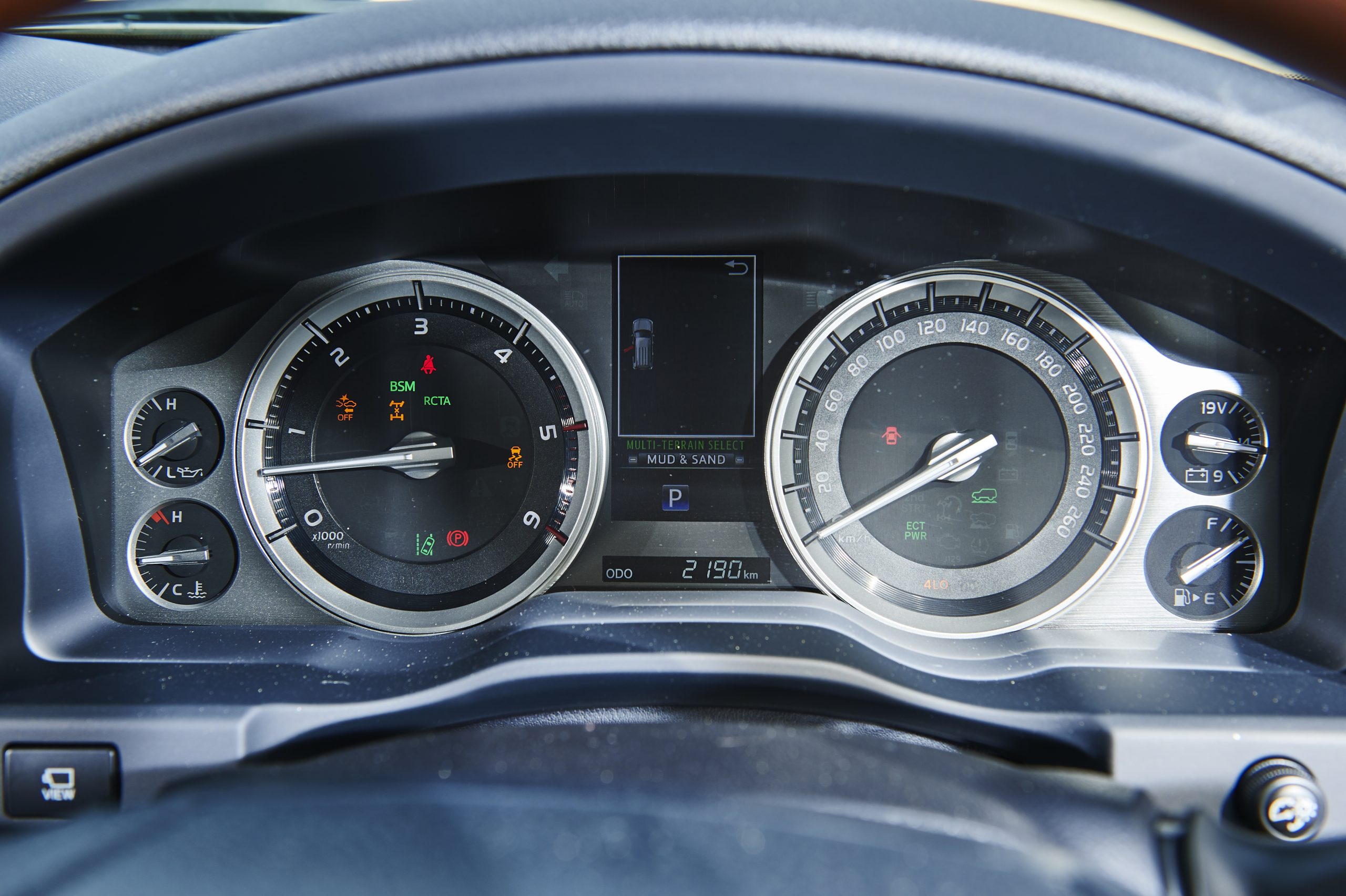The phrase ‘ignorance is bliss’ may sound great in theory. However, it’s a little less great when the thing you’re ignorant of is your house on fire while you’re having a shower. The same could be said for taking off down the road with your gearbox slipping. Or your engine losing oil pressure while you’re hurtling up Big Red.
Sure, in the moment you might be happy that everything seems to be running smoothly. But when you open the bathroom door shod in nothing but a towel and a goofy grin only to find yourself being licked by flames from the eighth circle of hell, it might suddenly click that perhaps ignorance isn’t bliss. Being informed of what was actually happening could have prevented the exact situation so many primary school children train for with repeated stop, drop and roll lessons. This is equally important for the other previously mentioned scenarios (the information; not stopping, dropping and rolling).
While not exactly the physical embodiment of Hell. Your 4X4’s inner workings are a finely balanced symphony of fire, explosions and whirring gears – all balancing on the knife edge between power and catastrophe. Lucky for us, with a few gauges placed within eyesight we’re able to monitor the bangs and the whirs to make sure they’re banging and whirring in the way we want them to. And not in the way that ends in flaming bath towels. Beats just turning up the radio.

1. Coolant temperature
Every 4X4 this side of the Lohner-Porsche comes fitted with a temperature gauge. They give you a quick heads up if your engine is about to self-destruct, leaving you with the bonnet up and the thumb out like a damsel in distress waiting for roadside assistance. Sounds like the factory really has our backs here.
Except they don’t. They cater for those amongst us most politely described as intellectually challenged, the radio-turner-upperers. When you see your temperature gauge rise you might panic. But it’s absurd to think the temperature of your engine plateaus not long after you start it and never alters no matter the conditions. To stop the three million weekly phone calls to their complaints department, the factory makes the gauge incredibly vague. It doesn’t change unless something is seriously wrong.
The problem with that is you don’t get any warning that things are going wrong until they’ve actually gone very wrong. Combine this with today’s heat-sensitive alloy engines and it’s a recipe for disaster for anyone who uses their 4X4 for more than the daily school run.
An aftermarket gauge removes the dead spots, allowing you to get a more up-to-date readout of what’s going on. And it will be far more accurate. Bonus points if you install one that also monitors coolant levels. A standard temperature gauge will rarely tell you if you burst a hose and dump the coolant.

2. Exhaust gas temperature
If a coolant temperature gauge is your up-to-the minute news update, an EGT gauge (or pyrometer) is like having the Prime Minister send you an SMS to say a nuke is coming our way and you should probably head to your fallout shelter. We all have those, right?
Pyrometers give you an instantaneous picture of exactly what is going on inside your engine. As loads build, exhaust gas temperatures rise. If they’re rising too high it’s a pretty safe bet your engine is running hotter than a chemically enhanced warehouse rave. And will no doubt culminate in a fried head (applicable to both the engine and the aforementioned rave).
An EGT gauge lets you see a side of your engine that is honestly far more important than what your coolant is doing. It can tell you if your fuel mix is too rich or lean. If your exhaust is too restrictive. And most commonly if you need to ease off the right foot as you’re climbing a hill. We consider them almost mandatory on any turbo-diesel engine. Frankly, it’s a travesty they don’t come fitted from the factory on every 4X4 ever made.

3. Transmission temperature
Love them or hate them, automatic transmissions are here to stay. They offer a heap of extra ability in technical situations; make it a whole lot easier for a friend or relative to drive in an emergency situation; and with modern technology they aren’t completely useless heading downhill, either.
The one issue that isn’t really up for debate is that when it comes to slush boxes. Excessive heat is never a good thing. It can be caused by a few common-sense issues like towing heavy loads, hard acceleration, insufficient cooling, slipping clutches in the transmission, or even low fluid level. The end result is often burnt fluid. Like most oils, ATF (Automatic Transmission Fluid) acts as a lubricant. When it overheats it starts to break down – meaning vital components are no longer lubricated and self-destruction is not far away.
The warning light on your dash tells you things have gone pear shaped, but a temperature gauge allows you to monitor what the gearbox is doing. It’ll show you the loads placed on it under hard acceleration, towing, and even sand driving – allowing you to keep the temperature down. Keeping the ATF cool will help to avoid costly transmission damage.

4. Oil pressure
It’s not exactly a secret that engines need oil. They’re giant behemoths of metal spinning and sliding against other metal. Up to 100 times a second in some cases. Without oil the whole works would grind to a halt quicker than you can say ‘shoulda bought an oil pressure gauge’.
Consider an oil pressure gauge as being a little like a mechanical check engine light. If you have oil pressure you have enough oil in the sump. The filter hasn’t fallen off. Your oil pump hasn’t failed. Your bearings are in decent shape and your piston rings haven’t ground themselves into oblivion. You can take it a step further if you know what you’re looking at, too. With abnormally high or low oil pressure being the telltale sign of a few issues. High pressure can be due to old or contaminated oil, a blocked filter, or oil viscosity being too high. Pressure too low can be indicative of oil viscosity being too low, slightly low oil levels, the engine being under load, or even fuel in the oil.
There’s a reason manufacturers used to fit oil pressure gauges when people worked on their own cars. The practice seems to have stopped since people stopped doing that.

5. Boost
Favoured by the ‘Fast and the Furious’ crowd, a boost gauge is vital to ensure your riveted-in floor pan doesn’t fall out mid granny-shift. Something double-clutching would have no doubt avoided. Hilariously inaccurate movies aside, boost gauges should be rather far down your priority list. They serve an important purpose in turbocharged applications – but always seem to be at the top of the list because they’re fun to look at.
A boost gauge tells you how much pressure your turbocharger (or supercharger) is pumping into your engine. Nothing more, nothing less. Too little boost means your turbo (or supercharger) isn’t doing its job properly. And it could be warning of a mechanical fault or failure requiring immediate attention. Too much boost has the potential to do catastrophic damage to your engine’s internals. If you have an aftermarket turbo system or have fitted modifications such as intercoolers, exhausts, or tuning chips and modules, a boost gauge is handy to keep an eye on things. For everyone else, the little orange turbo light on the dash will be enough to keep you on the straight and narrow.









